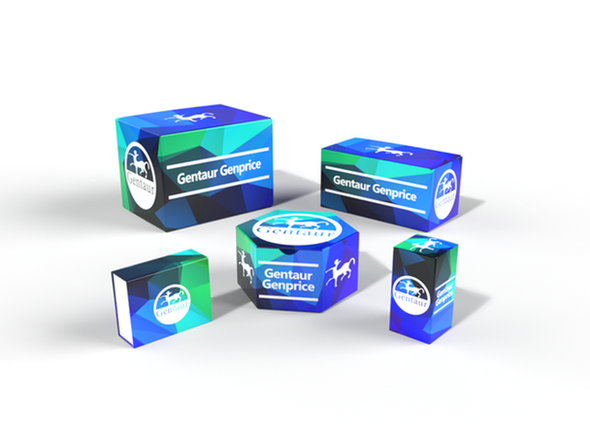Description
GABAB Receptor (phospho Ser783) Antibody | 50-226 | Gentaur UK, US & Europe Distribution
Host: Rabbit
Reactivity: Human, Mouse, Rat, Bovine, Chicken, Frog
Homology: N/A
Immunogen: Phosphopeptide corresponding to amino acid residues surrounding the phospho-Ser783 of GABAB R2.
Research Area: Phospho-Specific, Neuroscience
Tested Application: WB, IHC
Application: The antibody has been directly tested for reactivity in Western blots with rat tissue. It is anticipated that the antibody will react with mouse, human, non-human primate, chicken, bovine and Xenopus tissues based on the fact that these species have 100% homology with the amino acid sequence used as antigen.
Specificiy: N/A
Positive Control 1: N/A
Positive Control 2: N/A
Positive Control 3: N/A
Positive Control 4: N/A
Positive Control 5: N/A
Positive Control 6: N/A
Molecular Weight: 102
Validation: N/A
Isoform: N/A
Purification: Affinity Purified
Clonality: Polyclonal
Clone: N/A
Isotype: N/A
Conjugate: Unconjugated
Physical State: Liquid
Buffer: N/A
Concentration: N/A
Storage Condition: GABAB Receptor antibody can be stored at -20˚C and is stable at -20˚C for at least 1 year.
Alternate Name: N/A
User Note: Optimal dilutions for each application to be determined by the researcher.
BACKGROUND: Gamma-aminobutyric acid (GABA) is the primary inhibitory neurotransmitter in the central nervous system. There are two major classes of GABA receptors: the GABAA and the GABAB subtype of receptors. GABAB receptors are heterodimeric G protein-coupled receptors that mediate slow synaptic inhibition in the central nervous system. It has recently been demonstrated that AMPK binds directly to GABAB receptors and phosphorylates S783 in the cytoplasmic tail of the R2 subunit and that S783 plays a critical role in enhancing neuronal survival after ischemia as phosphorylation of S783 is evident in many brain regions and is increased dramatically after ischemic injury to the brain (Kuramoto et al., 2007) .










